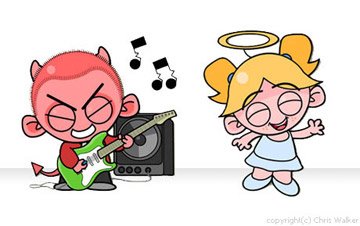In the world of web design, there are plenty of mistakes you can make, and in this article, I'm going to look at what I believe to be the top 10 biggest. You need to check your site for these mistakes right now, and fix them if they're there – otherwise you're going to be annoying your visitors and driving them away from your site.
1. Unclear Layout and Navigation. Many websites, especially business sites, seem to suffer from some kind of disease where even the very simplest task takes ten steps to achieve. If people are emailing you to ask you how to do things on your site, then you need to improve your layout and navigation. Remember: if there are certain tasks people seem to want to do more often, put them on the front page.
2. Plugin Overload. You've got to keep media that uses plugins to a strict maximum of one per page: that means that if you've got Flash, then you can't have a media player, or if you're using Java then you can't have Flash. It's not as bad to use the same plugin twice, however.
3. Unclear Linking. You might think it looks better to only show links when people put their mouse over them, or not make their colour stand out too much from the rest of the text, but it's not – while it might make the design look nicer, it makes it far less usable. Use a clearly contrasting colour for links, and preferably underline them.
4. Too Many Ads. When you're trying to make money from your website, it's all too easy to try to fit in more ads than you really should, or start using ad formats that are too intrusive. If you've put a new ad on your site, go to the site as if you were a visitor, and ask yourself honestly: is this just too much?
5. Strange Fonts. Stick to the most common web fonts: that's pretty much just Arial, Georgia, Tahoma and Verdana. If you're using more obscure fonts, then most visitors probably won't have them – and the ones that do will find your text hard to read. The only time you should use non-standard fonts is in your logo or in headings, if they are displayed as an image.
6. Flash Intros. Please, don't use a Flash intro on your website. You'd think everyone would realise they're a bad idea by now, but every web designer still gets clients who just don't seem to realise that Flash intros are universally mocked and hated. Don't be one of those people.
7. Unlabelled Email Links. It's a very bad idea to ever use a link that will send email (a mailto link) without clearly marking it with the word 'email'. If you just make clicking people's names send email, you'll annoy visitors who just clicked wanting to find out more about the person.
8. Broken Links. You've got to check all your links regularly to make sure that they all still work. There's nothing worse than finding a site that looks useful, only to find that it hasn't been updated in years and none of the links work any more. Yes, a website does mostly run itself after a while, but that doesn't mean that you should neglect the essential maintenance it needs from time to time.
9. No Marking for External Links. There are two kinds of links: internal (to other parts of your website) and external (to other websites). For the benefit of your visitors, though, it's best if you mark external links, either by making them a different colour or using some kind of a symbol (a box with an arrow is the usual one). It's also good to make the external links open in new windows, so people aren't leaving your site altogether when they click them.
10. Badly-sized Text. It's important to keep your text around the standard size (preferably just below). Making text too big or too small makes it hard to read and annoying for many visitors. The best thing you can do is use relative text sizing (not pixels) that allows the browser to respect the user's preferred text size. You might also consider offering buttons on your site to decrease or increase the size.




